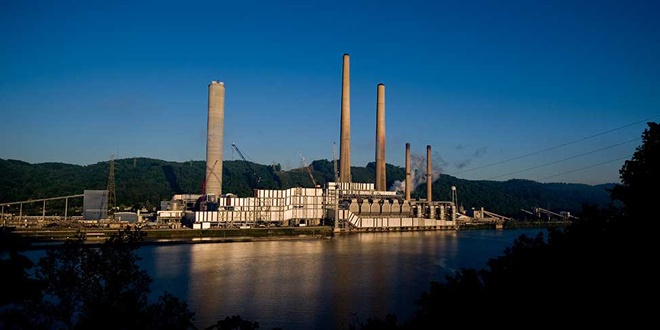By Rory D. Sweeney
With unprofitable power plants dragging down its bottom line, FirstEnergy says it is calling it quits on competitive generation. And its days as a competitive retail supplier may be numbered as well.
CEO Charles Jones said during the company’s third-quarter earnings call Friday that the company will seek to sell its 17,000 MW of competitive generation or persuade Ohio regulators to transfer them into rate-base units.
“After the election is over … we plan to begin legislative and regulatory efforts designed to preserve our remaining generation assets. We are looking to convert competitive generation to a regulated or regulated-light construct in Ohio,” Jones said. “We’re also open to exploring the sale of any or all of these assets, particularly the gas and hydro units at Allegheny Energy Supply. If we find that one or more of these options are not viable, we’ll also consider deactivating additional competitive generating units, similar to the ones we announced this summer at Sammis Units 1 through 4 and Bay Shore.”
He also raised the prospect of a bankruptcy filing for FirstEnergy Solutions, the company’s competitive retail arm.
The news came as FirstEnergy reported earnings of $380 million ($0.89/share), down slightly from earnings of $395 million ($0.94/share) for the same period last year. The company expects a loss of $1.30 to $0.90/share for the year.
Jones said the company would be seeking a “solution” for its nuclear units in Ohio and Pennsylvania “that recognizes the environmental benefits of these established baseload-generating resources.” New York regulators’ approval of a zero-emissions credits system to preserve the state’s upstate nuclear plants has been challenged in court. (See Federal Suit Challenges NY Nuclear Subsidies.)
$1.1B Loss
Jones’ announcement on the fate of FirstEnergy’s merchant generation was his most definitive yet. After posting a $1.1 billion second-quarter loss tied to the closure of five coal-fired plants, Jones said the company would not make any large investments to prop up the credit rating of its generation business. (See FirstEnergy Posts $1.1B Loss, Eyes Exit from Merchant Generation.)
Last month, the company was disappointed when Ohio regulators rebuffed its request for a $4.46 billion subsidy spread over eight years, approving instead $612 million over three years. (See PUCO Rejects FirstEnergy’s $558M Rider, OKs $132.5M.)
Jones last week blamed “weak” current prices and “anemic” demand forecasts for the poor financial performance of the generation fleet, which he said “is weighing down the rest of our company.”
“And while we have fought hard, we cannot continue to wait for an upturn,” he said. “We believe an accelerated timeframe is necessary so that we can remove lingering uncertainty, especially for our employees, and ensure that our company is singularly focused on the transition to becoming a fully regulated company.”
Jones estimated it would take 12 to 18 months for the company to execute its plans for its generation.
He also warned of deteriorating conditions at FirstEnergy Solutions, which sells retail energy to residential, commercial and industrial customers in the Northeast, Midwest and Mid-Atlantic regions.
“Further downgrades … by the rating agencies could require posting additional collateral of $355 million,” he said. “The continued viability of FirstEnergy Solutions is also pressured by some additional risks over the near term. These risks, which include an inability to implement our strategic alternatives in a timely manner, an adverse outcome related to a coal transportation contract dispute at FirstEnergy Solutions, or the inability for FirstEnergy Solutions to extend or refinance debt maturities of $515 million in 2018 could cause FirstEnergy Solutions to take additional actions, including restructuring its debt and other financial obligations or seeking bankruptcy protection.”
In West Virginia, meanwhile, FirstEnergy’s Mon Power subsidiary plans to issue a solicitation by the end of this year to address its generation shortfall.



